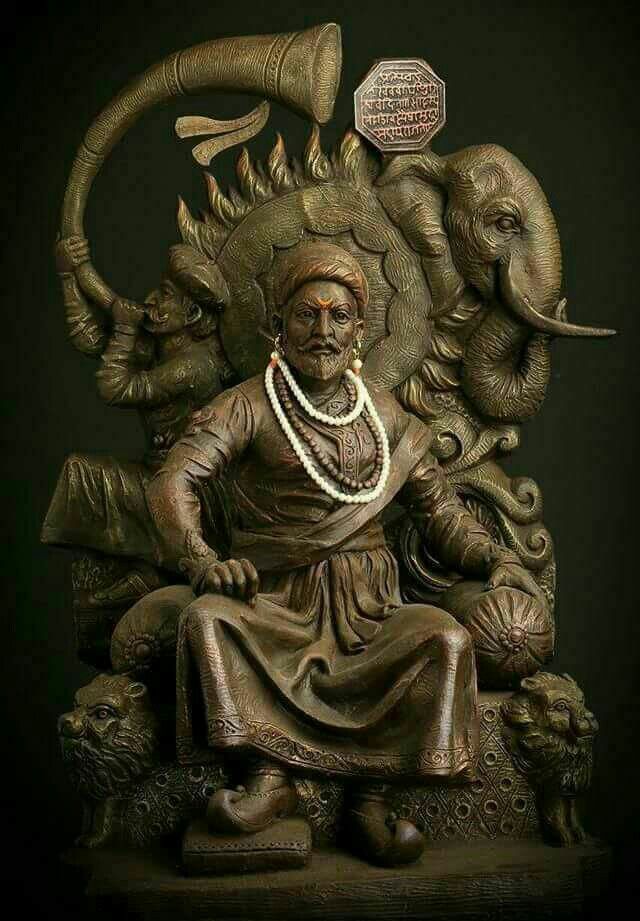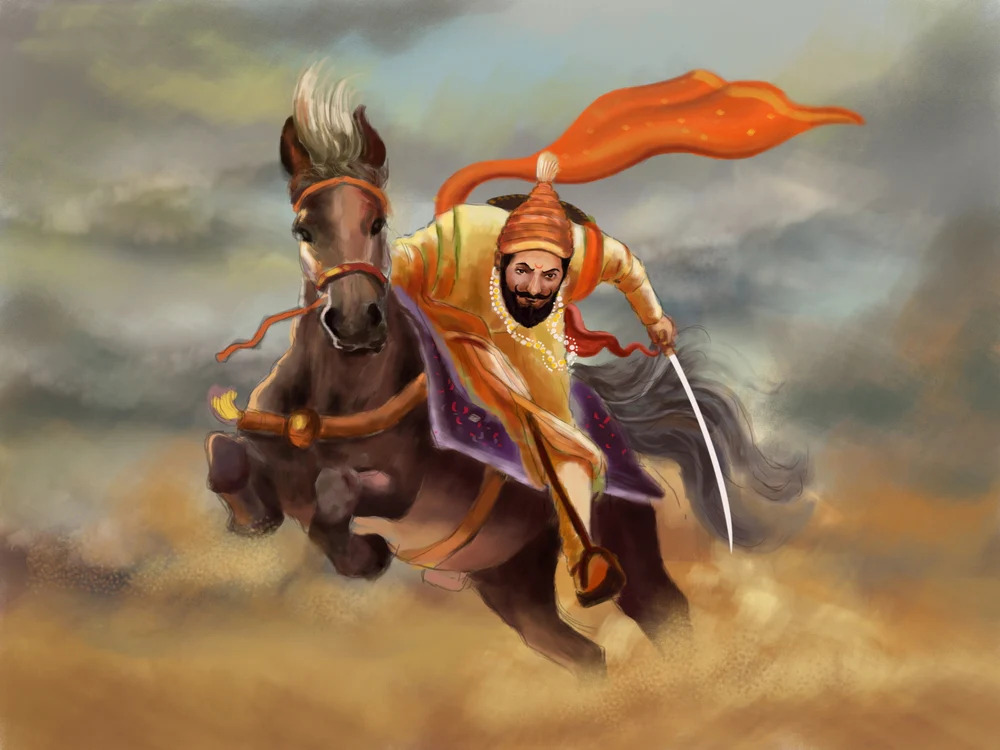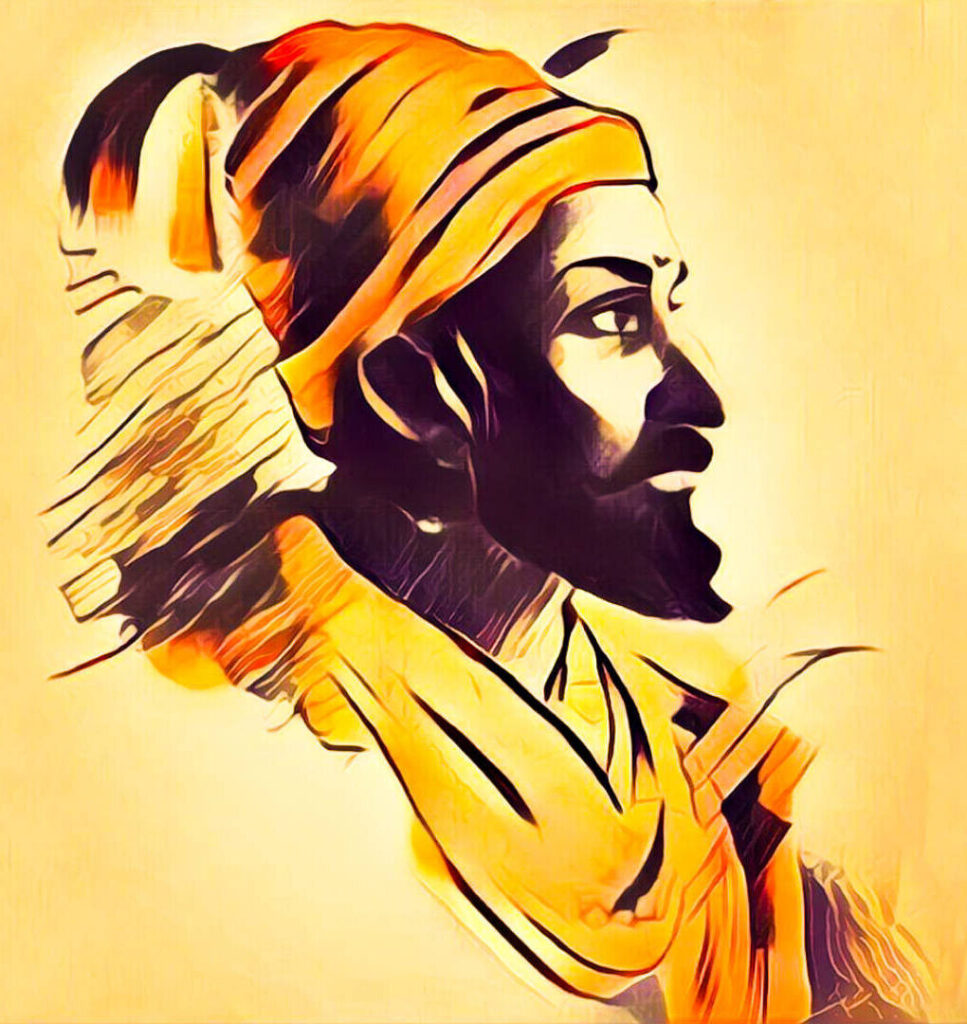Guerrilla Warfare - Shiv Sutra - Ganimi Kawa
Sree Chhatrapati Shivaji Maharaj: The Master of Guerrilla Warfare

Mastery of Terrain
Exploiting Geography: Shivaji Maharaj’s intimate knowledge of the local terrain was a cornerstone of his strategy. He transformed his homeland’s mountains, forests, and valleys into impenetrable fortresses, where his enemies faltered and fell. He leveraged the natural landscape to his advantage, creating a defensive network that was nearly impossible to penetrate.
Ambush Expertise: His forces skillfully set up ingenious ambushes in narrow passes and dense forests, effectively turning every inch of land into a potential battlefield. As a result, these ambushes decimated enemy forces, showcasing his unparalleled command of guerrilla tactics. Furthermore, through these methods, he consistently outmanoeuvred and overwhelmed his adversaries, securing his dominance on the battlefield.
Impregnable Fortifications
Strategic Forts: Shivaji Maharaj’s vision led to the construction and capture of numerous strategically located forts. These hilltop fortresses were impenetrable strongholds, resistant to enemy attacks.
Defensive Masterpieces: These forts offered safe havens during sieges, with ample provisions and were built to endure prolonged attacks. Consequently, they stood as monuments to his strategic foresight and engineering acumen. These fortifications provided protection and symbolized resilience, boosting the morale of Shivaji’s forces in challenging times.
Unmatched Surprise and Deception
Surprise Attacks: Shivaji Maharaj’s genius as the Father of Guerrilla Warfare lay in his ability to strike fear into his enemies through meticulously planned surprise attacks. For example, he often launched night raids and carried out assaults during inclement weather. Consequently, his adversaries were left perpetually on edge, never knowing when or where he would strike next, which only heightened their sense of unease.
Master of Deception: With unparalleled cunning, Shivaji Maharaj orchestrated elaborate ruses to mislead his enemies, spreading disinformation and creating confusion within their ranks. This strategic brilliance ensured his enemies were always a step behind, bewildered and vulnerable.
Unrivalled Mobility and Speed
Swift Movements: The Maratha forces, comprising the legendary Mavalas, exemplified agility and speed. Notably, these warriors, trained to navigate the treacherous Western Ghats, were able to outmanoeuvre any foe. Furthermore, their lightning-fast movements transformed the rugged landscape into a formidable weapon against invaders.
Strategic Retreats: Shivaji Maharaj perfected the art of the tactical retreat. After delivering devastating blows to their enemies, his forces would vanish into the terrain. Consequently, this left their adversaries exhausted and demoralized in their futile pursuit.
Elite Small Units
Flexible and Fearless Units: Shivaji Maharaj’s army, composed of highly trained, small units, was capable of independent operations. Furthermore, embodying the Maratha spirit of resilience and bravery, these units employed hit-and-run tactics with lethal precision, inflicting maximum damage on larger enemy contingents. Additionally, their flexibility allowed them to adapt quickly to changing battlefield conditions, which further enhanced their effectiveness.
Decisive Strikes: These agile units could swiftly assemble for coordinated attacks and, just as quickly, disperse, making them both elusive and deadly. By striking decisively and then seamlessly disappearing into the terrain, they consistently kept their enemies off balance. As a result, they effectively demonstrated their tactical superiority.


The History of Guerrilla Warfare
Shivaji was influenced by ancient Indian military strategies and examples of smaller armies using guerrilla warfare to defeat larger forces. He learned these principles through his mother, Jijabai. He recreated guerrilla warfare based on his understanding of warfare and intelligence reports from his spies about enemy strategies. This adaptation of guerrilla tactics enabled him to effectively challenge and overcome more powerful forces. It left a lasting legacy on the art of warfare.
The history of guerrilla warfare stretches back to ancient times, evolving from primitive conflicts into more sophisticated strategies. For instance, Sun Tzu, a Chinese general, and strategist, introduced the concept of guerrilla warfare in his The Art of War (6th century BCE). His innovative ideas significantly influenced modern guerrilla warfare, directly shaping the tactics of leaders like Mao Zedong and Ho Chi Minh. Consequently, they applied these strategies in their revolutionary movements, which later inspired similar efforts, such as the Cuban “foco” theory and the Afghan Mujahadeen’s resistance against Soviet forces.
Ancient nomadic tribes like the Scythians, Goths, and Huns used guerrilla tactics to challenge empires like Persia and Rome. Quintus Fabius Maximus, known as the ‘father of guerrilla warfare,’ developed the Fabian strategy to counter Hannibal during the Second Punic War. These examples, therefore, underscore the widespread application of guerrilla warfare across different cultures and historical periods.
Celtic, Germanic, and African tribes embraced guerrilla tactics to resist Roman expansion. For example, leaders like Viriathus of Lusitania and Vercingetorix of Gaul effectively employed these methods to challenge the might of the Roman legions. Tacfarinas in Numidia and Caratacus in Britain utilized guerrilla warfare to resist Roman conquest. Their actions left a lasting impact on the history of warfare in the classical ancient world.
